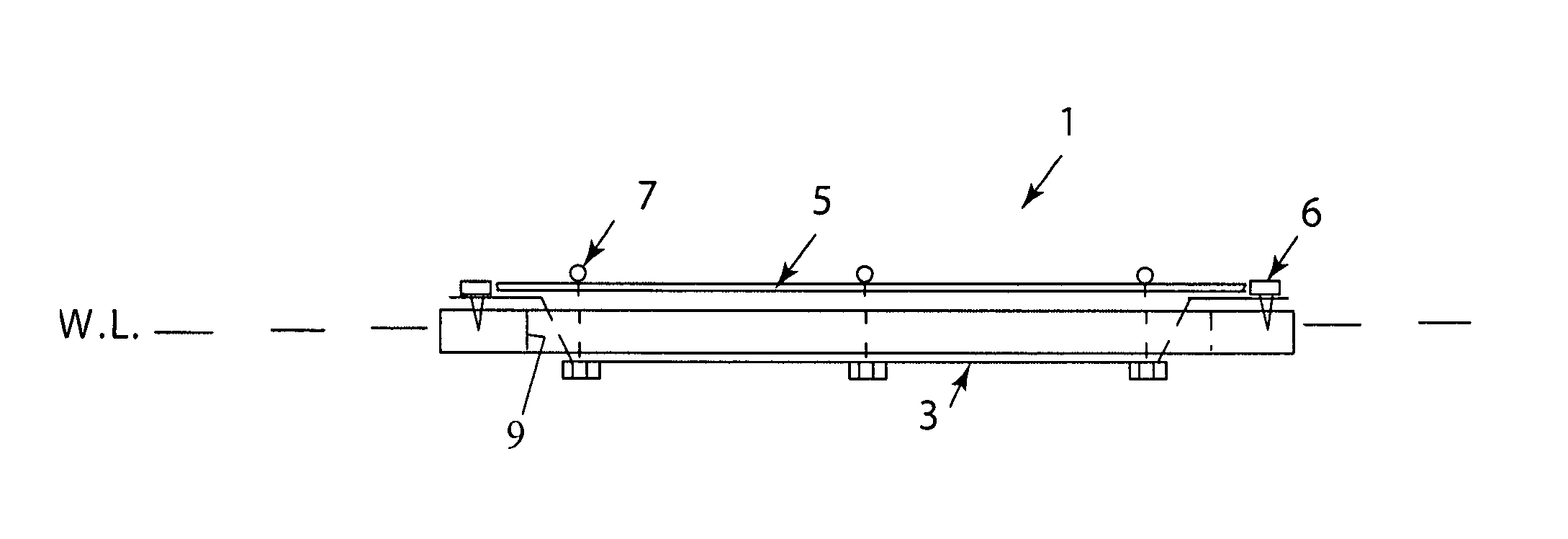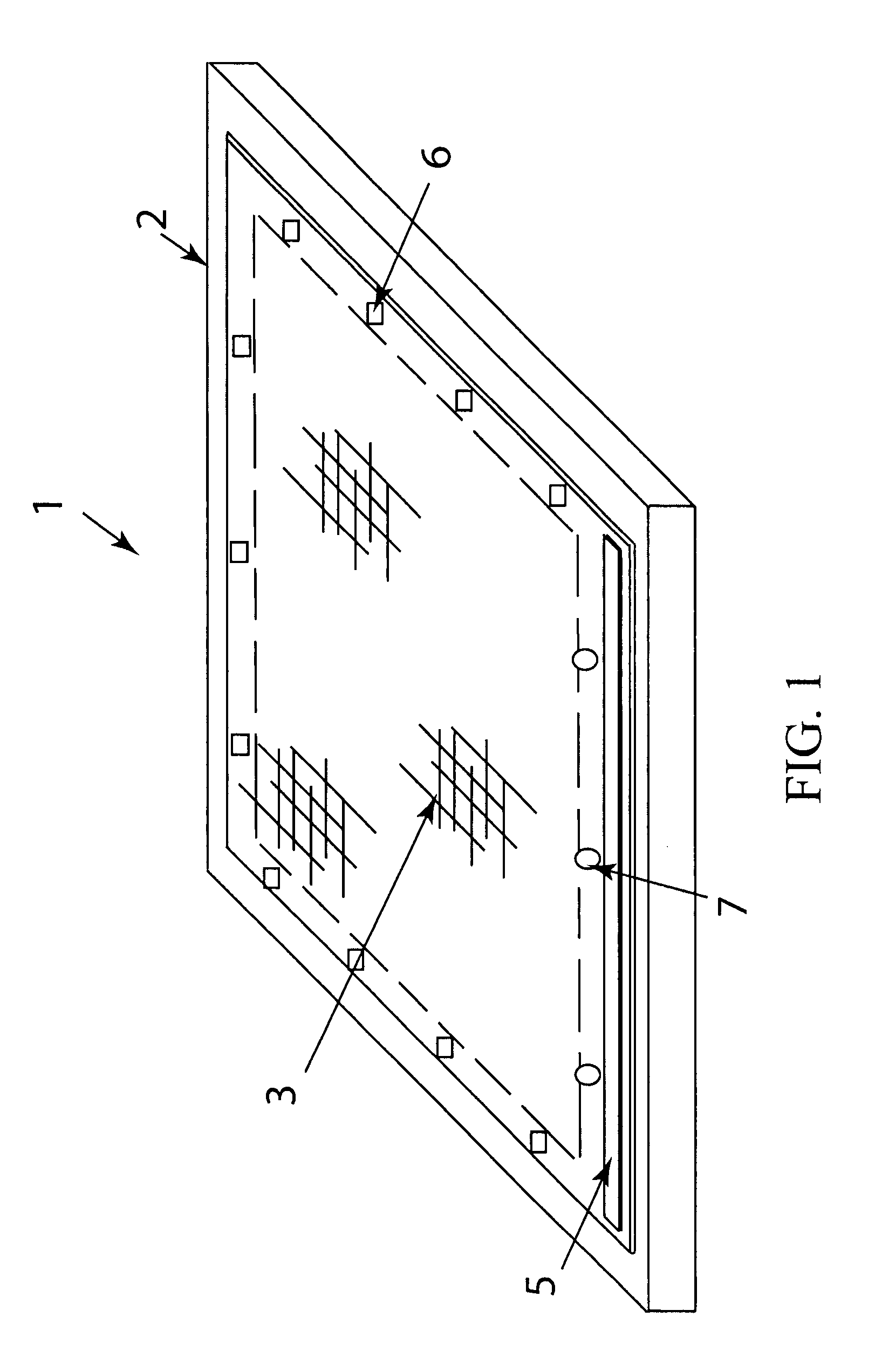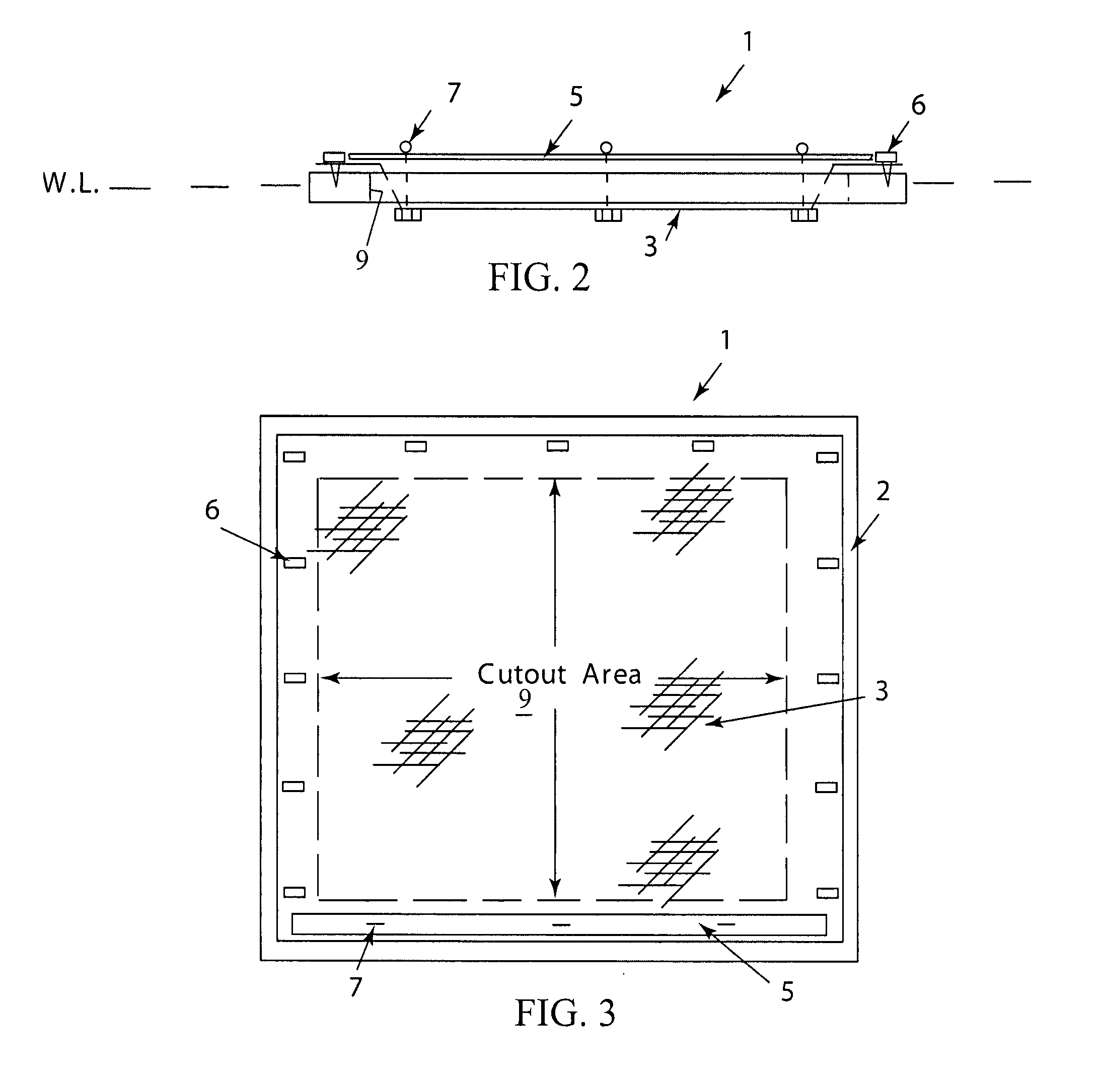Floating wetland raft
- Summary
- Abstract
- Description
- Claims
- Application Information
AI Technical Summary
Benefits of technology
Problems solved by technology
Method used
Image
Examples
Embodiment Construction
[0027] The present invention is a easily deployable floating wetland raft 1 for reducing nutrients in storm-water retention ponds or any body of water that collects nutrient-laden water.
[0028]FIGS. 1-4 are perspective, cross-sectional side, top, and exploded cross-sectional side views, respectively of the floating wetland raft 1 according to a preferred embodiment of the present invention. The floating wetland raft 1 comprises a floating raft body 2 onto which is attached a removable and biodegradable fiber mat 3. The fiber mat 3 serves as a surface on which wetland plants 9 are grown for consuming nutrients from the water beneath (growth of wetland plants 9 is discussed in reference to FIG. 5).
[0029] A single-layer fiber mat 3 covers the top of the floating raft body 2, and the mat 3 is of sufficient area and thickness to nest in the open area of the raft body 2. This assures that the nested portion of the mat 3 will be partially submerged in the water and stay wet, which is impo...
PUM
 Login to View More
Login to View More Abstract
Description
Claims
Application Information
 Login to View More
Login to View More - R&D
- Intellectual Property
- Life Sciences
- Materials
- Tech Scout
- Unparalleled Data Quality
- Higher Quality Content
- 60% Fewer Hallucinations
Browse by: Latest US Patents, China's latest patents, Technical Efficacy Thesaurus, Application Domain, Technology Topic, Popular Technical Reports.
© 2025 PatSnap. All rights reserved.Legal|Privacy policy|Modern Slavery Act Transparency Statement|Sitemap|About US| Contact US: help@patsnap.com



